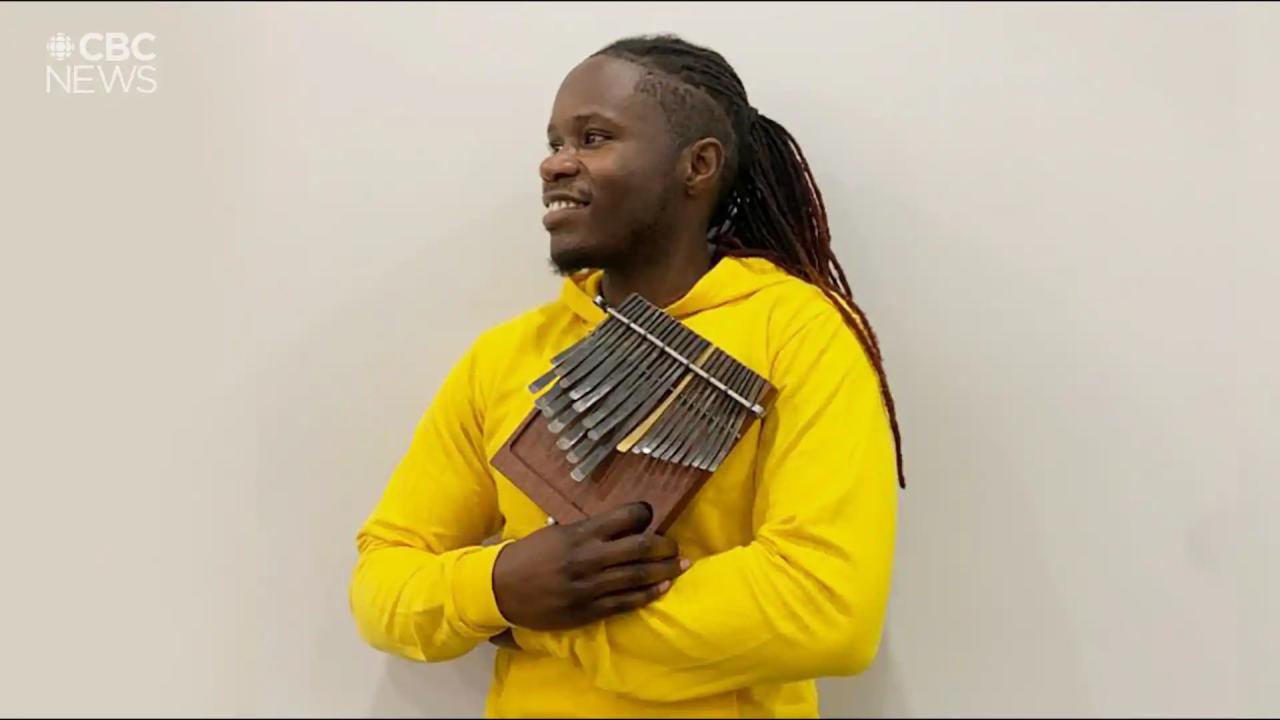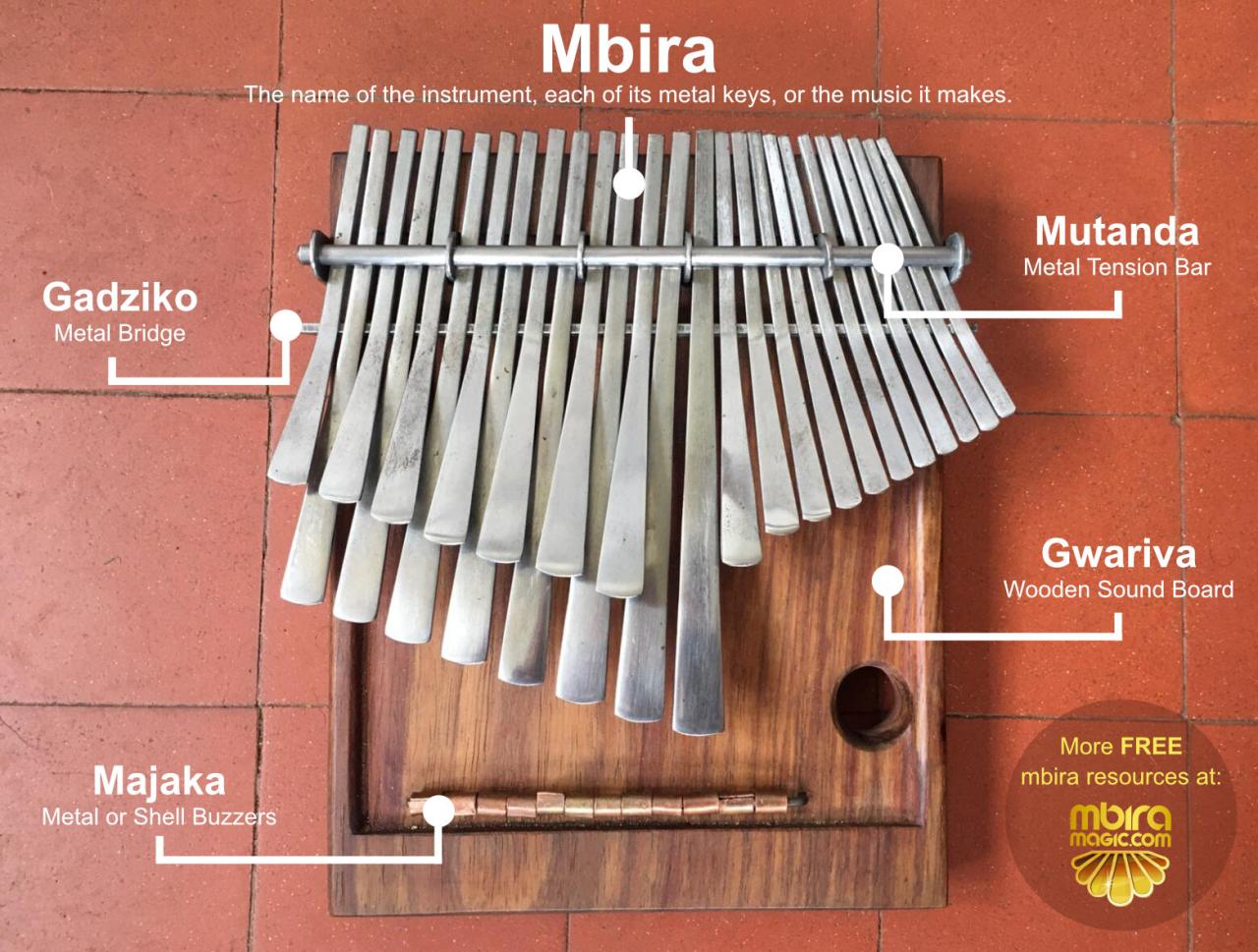As what musicians pluck on an mbira takes center stage, this opening passage beckons readers into a world crafted with rich knowledge, ensuring a reading experience that is both absorbing and distinctly original. Delve into the heart of this enchanting instrument, where skilled hands dance upon its keys, giving life to melodies that resonate with cultural significance and captivating rhythms.
The mbira, an instrument steeped in tradition and innovation, has captivated musicians and music lovers alike. Its unique sound, produced by plucking metal keys attached to a wooden board, has woven its way into the fabric of diverse musical genres, from traditional African rhythms to contemporary electronic soundscapes.
Definition and History of the Mbira

The mbira is a plucked idiophone from the lamellaphone family, originating in Southern Africa. Its history is deeply intertwined with the spiritual and cultural practices of the Shona people of Zimbabwe. The mbira is believed to have originated over 1,000 years ago, and has since spread to other regions of Africa, including Mozambique, Malawi, and South Africa.
Types of Mbira
There are several types of mbira, each with its own unique characteristics. The most common type is the mbira dzavadzimu, or “spirit mbira,” which has 22 to 28 metal keys attached to a wooden soundboard. Other types include the mbira nyunga nyunga, a smaller mbira with a higher pitch, and the mbira matepe, a larger mbira with a lower pitch.
Regional Variations
The mbira has undergone regional variations as it spread throughout Southern Africa. In Zimbabwe, the mbira is typically played in a seated position, while in Mozambique it is often played while standing or kneeling. The tuning and playing techniques also vary from region to region, resulting in distinct musical styles.
Role in Ceremonies and Rituals
The mbira plays a significant role in traditional ceremonies and rituals among the Shona people. It is believed to have the power to communicate with the spirits and ancestors, and is often used in healing ceremonies, rainmaking rituals, and other important events.
The music of the mbira is said to create a trance-like state, allowing participants to connect with the spiritual realm.
Examples of Traditional Mbira Music
- Nhemamusasa: A popular mbira song that celebrates the beauty of nature.
- Kariga Mombe: A traditional healing song that is believed to have therapeutic effects.
- Mbira Dzevadzimu: A sacred mbira song that is used in spirit possession ceremonies.
Construction and Tuning of the Mbira
The mbira’s construction involves a wooden board, typically made from indigenous hardwoods like mahogany or rosewood, with a series of metal keys attached to it. The number of keys varies depending on the region and tuning, but it typically ranges from 22 to 28.
The keys are made of iron or steel and are graduated in length, producing different pitches when plucked. They are arranged in two rows, with the lower row producing lower notes and the upper row producing higher notes.
Tuning Process, What musicians pluck on an mbira
Tuning the mbira is a crucial process that involves adjusting the tension of the keys to achieve the desired scale. This is done by bending the keys slightly at their base, either upwards to increase tension and raise the pitch or downwards to decrease tension and lower the pitch.
The mbira can be tuned to various scales, including the traditional Nyungwe Nyungwe scale, which consists of five notes with an interval of a minor third between each note. Other scales, such as the Western major scale, can also be achieved by adjusting the tuning accordingly.
Unique Sound
The mbira’s unique sound is produced by the combination of the plucked keys and the resonance of the wooden board. The keys, when plucked, produce a clear, bell-like tone that resonates through the board, creating a rich and vibrant sound.
The tuning and construction of the mbira contribute significantly to its distinctive sound, which is characterized by its clear, resonant tones and its ability to produce a wide range of scales.
Techniques for Plucking the Mbira
Mastering the art of mbira playing involves understanding and practicing specific plucking techniques. These techniques determine the rhythmic patterns, melodic lines, and overall sound of the instrument.
The mbira is played by plucking its metal keys with the thumbs and forefingers. The basic technique involves using the thumb to pluck the keys in a downward motion, while the forefinger plucks the keys in an upward motion. This alternating motion creates a continuous and rhythmic sound.
Different Plucking Patterns
Different plucking patterns create different rhythms and melodies. For example, a simple alternating pattern between the thumb and forefinger produces a basic rhythm. By varying the timing and intensity of the plucks, musicians can create complex and intricate rhythms.
Traditional Mbira Playing Techniques
Traditional mbira playing techniques have evolved over centuries and vary depending on the region and musical style. Some common techniques include:
- Kumusoro:A technique that involves plucking the keys in a rapid and repetitive manner, creating a buzzing or tremolo effect.
- Kushaura:A technique that involves sliding the thumb across the keys, creating a smooth and melodic sound.
- Kutsinhira:A technique that involves using the thumb to pluck the keys in a downward motion, while simultaneously using the forefinger to pluck the keys in an upward motion, creating a syncopated rhythm.
These techniques, combined with the unique tuning of the mbira, contribute to the instrument’s distinctive and captivating sound.
Notable Musicians and Their Contributions

The mbira has a rich history and has been played by many notable musicians over the years. These musicians have helped to develop the instrument and its music, and their contributions have had a lasting impact on the mbira’s popularity and evolution.Some
of the most notable mbira musicians include:
- Ephat Mujuru: Ephat Mujuru was a Zimbabwean mbira player and composer. He is considered one of the most influential mbira musicians of all time, and his music has been praised for its beauty and complexity. Mujuru was a master of the mbira, and he was able to create a wide range of sounds and rhythms on the instrument.
He was also a gifted composer, and his songs are still played by mbira players around the world.
- Stella Chiweshe: Stella Chiweshe is a Zimbabwean mbira player, singer, and dancer. She is one of the most successful female mbira players in the world, and she has toured extensively throughout Africa, Europe, and the Americas.
Chiweshe’s music is characterized by its energy and passion, and she is known for her powerful vocals and her ability to connect with her audience.
- mbira dze njuzu: mbira dze njuzu is a group of mbira players from Zimbabwe. The group was founded in 1992, and they have since released several albums and toured extensively throughout the world.
mbira dze njuzu’s music is characterized by its originality and innovation, and they have helped to popularize the mbira in new audiences.
These are just a few of the many notable mbira musicians who have made significant contributions to the instrument and its music. These musicians have helped to spread the mbira’s popularity around the world, and they have inspired a new generation of mbira players.
Contemporary Use and Adaptations of the Mbira
The mbira continues to thrive in contemporary music, inspiring musicians across genres. In traditional settings, it remains an integral part of ceremonies and rituals. However, its versatility has led to its adoption in folk and electronic music.
Adaptations and Innovations
Contemporary musicians have adapted the mbira to create new sounds and possibilities. By altering the tuning, adding pickups, or incorporating electronic effects, they have expanded the instrument’s sonic range.
Notable Contemporary Mbira Players
Notable contemporary mbira players include:
Stella Chiweshe
A Zimbabwean mbira master known for her virtuosic playing and incorporation of traditional and modern elements.
Chiwoniso Maraire
A Zimbabwean singer-songwriter who used the mbira as a central element in her folk and political songs.
Dobet Gnahoré
An Ivorian-French singer-songwriter who blends mbira with traditional West African rhythms and electronic influences.
Detailed FAQs: What Musicians Pluck On An Mbira
What is the origin of the mbira?
The mbira is believed to have originated in Zimbabwe and is closely associated with the Shona people.
What materials are used to make an mbira?
Mbiras are typically made from wood, with metal keys attached to the soundboard.
How is the mbira tuned?
The mbira is tuned using a variety of techniques, including stretching or bending the keys and adjusting the tension of the strings.